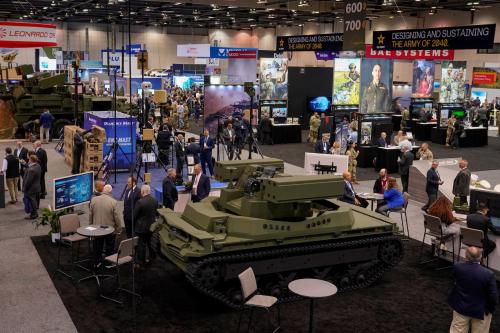The Pentagon is embarking on a modernization of U.S. strategic nuclear forces that will cost hundreds of billions of dollars. Much of it makes sense, as key elements of the strategic triad age out and require replacement. As long as nuclear weapons exist, the United States should maintain a robust triad. However, the long-range stand-off weapon (LRSO), a new nuclear-armed air-launched cruise missile, does not make sense.
The U.S. strategic triad consists of intercontinental ballistic missiles (ICBMs), submarine-launched ballistic missiles (SLBMs), and strategic bombers. This mix gives the Pentagon the ability to hold at risk things that a potential adversary values. The inherent ability to destroy those things provides the basis for deterrence.
ICBMs can hold at risk targets 6,000 miles away. As they are based on mobile ballistic missile submarines, SLBMs can reach targets anywhere on earth. The same is true for weapons carried by the B-2 and B-52 and, in the future, the B-21. With aerial refueling, U.S. strategic bombers have global reach.
So the question arises: What unique target set could the LRSO hold at risk that cannot be threatened by ICBMs, SLBMs, or gravity bombs delivered by stealthy strategic bombers? At a recent panel discussion on the LRSO, the best answer to this question was “certain things”—but the proponent could not articulate what those “things” were. That explains much of the questioning about the LRSO. No one seems able to offer a plausible explanation for what the LRSO could do that other strategic nuclear systems cannot.
The weapon’s justification often seems to boil down to: The Pentagon is replacing other strategic systems because they are old, so it should replace the old nuclear-armed air-launched cruise missile (ALCM) as well. Does that logic hold?
The Air Force developed nuclear-armed ALCMs in the 1970s because the B-52 presented a big target on radar screens. Concern grew that the B-52 could not penetrate Soviet air defenses. A B-52 armed with ALCMs could launch its missiles from well beyond the reach of those air defenses.
Today, however, the Air Force has the stealthy B-2 bomber. It is in the process of procuring 80 to 100 B-21 bombers, which reportedly will incorporate stealth and advanced electronic warfare capabilities. The Department of Energy is already well along in the program to modernize the B61 nuclear gravity bomb. The modernized bomb will be highly accurate and have a variable yield. B-2 and B-21 bombers that can penetrate advanced air defenses and deliver B61 bombs against targets make the LRSO redundant.
Some suggest the LRSO hedges against a compromise of the B-21’s stealth. If that argument has merit, Congress ought to reexamine the wisdom of spending $60 to $80 billion—or perhaps $100 billion—on the bomber. Converted KC-46s (military refueling variants of the Boeing 767) with LRSOs would offer a far cheaper option. The Pentagon, however, seems to believe the B-21 will be capable of defeating advanced air defenses.
That being so, the case for the LRSO is weak. It will cost taxpayers $20 to $30 billion. True, that is a relatively small cost compared to what the Pentagon will pay to replace the Ohio-class ballistic missile submarines or build the B-21. But it is not chump change.
Some LRSO proponents cite the relatively “small” cost to argue that the defense budget can afford it. Current Pentagon officials, however, say they have no idea how to pay for everything they want for strategic modernization. Given the rising cost of mandatory spending such as social security and Medicare, and the pressure to hold down the deficit, the budget problem will not become easier in the 2020s, when the “bow-wave” of strategic modernization spending arrives. The Air Force will likely find itself having to choose between B-21s, KC-46 tankers, F-35 fighters, and the LRSO. It also wants to buy a new ICBM then. It is hard to see how all of that will be affordable.
Funding the LRSO now contributes to a budget time-bomb that the current administration and Congress will leave to their successors. The LRSO seems a redundant weapon without a mission. Shelving the program would defuse part of that time-bomb.



Commentary
The weak case for the long-range stand-off weapon
July 12, 2016